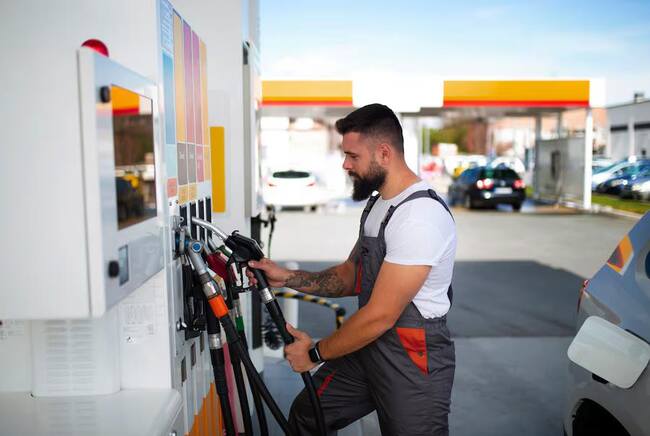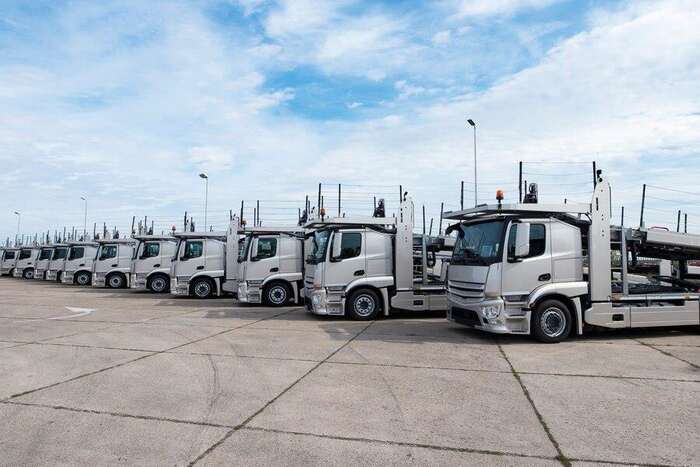Since the beginning, fuel prices have largely influenced the trucking economics; however, in recent years, the influence has grown even stronger.
The constant fluctuations of the price of diesel, with periodic hikes, have bled away the maximum profit, thus compelling drivers, fleets, and logistics companies to act in a split second and incorporate different strategies.
For instance, adjusting pricing, investing, or fundraising for support technology, and incorporating sustainability measures, to roll out financial constraints. Such measures are important because fuel prices have not only put a severe dent on the trucking industry professionals but also spread fear throughout the country.
Regardless of being a driver or fleet operator, being aware of how fuel prices are transforming daily ground-level activities and long-term strategies is essential. To learn more about how fuel price hikes have triggered innovation, logistical shifts, and the rebuilding of the American trucking industry, read the complete article.

1. Diesel Prices: A Pressing Economic Force
Diesel price inflation constitutes one of the biggest obstacles to the industry today. Early in 2025, when prices slightly declined, even then, diesel was still a huge expense for the trucks.
Therefore, staying updated on every trucking news development related to fuel pricing and operational tactics is critical. For instance, a hike in diesel prices put small operators under high pressure due to tight margins and inefficiency to bear volatility.
Therefore, to tackle this, most of the carriers use fuel surcharges, additional fees that are passed onto shippers. While this practice provides some relief, it isn’t a sure-shot solution.
On the other hand, large fleets negotiate bulk fuel contracts or invest in fleet analytics to control fuel use better. Ultimately, escalation in diesel prices often calls for an immediate recalibration of business strategy, making fuel cost consciousness a very basic necessity for survival in today’s market.
2. Route Optimization for Cost Savings
In response to the rise in fuel prices, route optimization has become a prime focus. Cutting-edge GPS and logistics software let fleets determine the most fuel-efficient routes, using real-time data about traffic, weather, and even topography.
By reducing idling and unnecessary detours, these systems are helping drivers cut fuel consumption. Implementing the initiatives along with driver training in eco-piloting, companies expect to trim fuel consumption by 15 percent.
Overall, by using modern-day tools and software, one could save thousands of dollars every year.
3. Sustainable Alternatives and Green Fleets
With rising fuel prices, fleets are switching to greener alternatives. Biodiesel, compressed natural gas (CNG), and renewable diesel are gaining popularity due to lower emissions and long-term savings.
Several big truck manufacturers are also investing in electric semi-trucks that offer zero emissions and lower fuel and maintenance costs. Fleets that embrace green technology also receive enhanced visibility among contractors who focus on sustainability.
Meanwhile, some companies are also switching to sustainable alternatives such as hybrid-electric vehicles for inner-city deliveries simply because they are cost-effective. Moreover, these green topographies further indicate how fuel prices are accelerating the trucking industry towards cleaner and cost-efficient energy.
4. Changing Driver Behaviors
Rising fuel costs are reshaping how drivers approach the road. Independent truckers, in particular, are adopting fuel-saving habits to protect their earnings. Many reduce idling time, use cruise control more often, and avoid driving at higher speed limits.
Similarly, drivers now prioritize shorter hauls and fewer empty lines to maximize their efficiency and lower unnecessary fuel usage.
Moreover, the trucking industry has seen a jump in vehicle maintenance; drivers and fleet managers now ensure the timely replacement of worn-out tyres, proper inflation, and regular upkeep of the vehicle’s engine.
Some drivers are also turning to fuel apps that help them identify affordable diesel stations nearby. Overall, in today’s fuel environment, small behavior shifts add up. Drivers who embrace smarter habits can stretch every gallon and gain a competitive edge.
5. Technology As a Fuel-Saving Ally
Technology is transforming the landscape of truck fuel management. Telematics systems now monitor driving behavior, engine performance, and idle time in real time. This data empowers fleet managers to spot inefficiencies and coach drivers for better fuel economy.
Aerodynamic upgrades- like trailer side skirts, gap reducers, and low-rolling-resistance tires- reduce drag and fuel burn. Additionally, automated transmissions are gaining popularity for their ability to optimize shifting and reduce fuel waste.
Many fleet operators and drivers are also exploring the option of truck platooning in order to reduce wind drag. Altogether, these technologies demonstrate how innovation can counter fuel volatility and drive operational efficiency
6. Freight Pricing and Surcharges
Surcharges are charged to customers on top of the base rate, ensuring pricing transparency and allowing carriers to recoup rising costs. They also encourage transportation cost hikes to shippers that can impact customer relationships.
To keep their rates competitive, some fleets use tiered pricing or lock-in arrangements that anchor rates over time.
Openness to fuel surcharge policies in carriers makes them more desirable to shippers since fuel volatility necessitates flexible and transparent pricing agreements as a prerequisite to ensure profitability and customer trust.
Bottomline
Fuel prices are not just a budgetary concern; they are a driving force behind innovation and change in the trucking industry. The effects ripple through everything from freight pricing models to truck upgrades and custom driver strategies.
In response, the industry is becoming more efficient, data-driven, and sustainability-centric. Adapting to changes is not an option; it’s a necessity for survival in the long term. Moreover, in such a business with thin margins and stiff competition, change becomes the way to beat the curve.


